Bleeding Control Kits: A Case Study
- May 17, 2021

Bleeding Control Kits: A Case Study
The Importance of Stop the Bleed Kits
The Problem: Traumatic injury is a leading cause of death.
Trauma is the leading cause of death for Americans 45 and younger (Coalition for National Trauma Research). Up to 20% of trauma-related deaths in the United States could be prevented. That’s approximately 30,000 lives that could be saved with proper training, equipment, and product availability.
The Overview: Understanding the scope of the problem is the first step to stopping it.
It’s our hope that this post will help corporate clients, nonprofit organizations, educational institutions, government agencies, municipalities, and communities to better understand traumatic bleeding and the importance of bleeding control kits and Stop the Bleed kits.
The number of active shooter events, school shootings, and mass casualty incidents at churches, concerts, sporting events, and other public venues has increased dramatically over the past several years.
As a result, these tragedies have changed what being a “first responder” means in society. Now, the first responder could be you.
Key trauma statistics:
- Victims of severe bleeding can die within 5-10 minutes (Journal of American College of Surgeons).
- Uncontrolled bleeding is the number one cause of preventable death from trauma (Hartford Consensus).
- In 2020, gun violence killed nearly 20,000 Americans (Gun Violence Archives).
- Trauma is the number one cause of death for Americans under 45 and the fourth leading cause of death overall for all ages (American Association for the Surgery of Trauma).
- 671 billion a year in healthcare costs and lost productivity (CNTR).
- Hemorrhagic shock is responsible for 1.9 million deaths worldwide (ResearchGate).
- 42,060 Americans are estimated to have died in motor vehicle crashes in 2020 (National Safety Council).
- Because of better wound care, between 2005 and 2013, the percentage of wounded service members who died of their injuries in Afghanistan decreased by nearly half (Associated Press).
- Over 1 million people have learned how to Stop the Bleed (Stop the Bleed).
The Solution: Stop the Bleed bleeding control kits and training
Stop the Bleed is a national awareness campaign and a call to action started by the White House and the Department of Homeland Security in 2015. The Stop the Bleed program cultivates grassroots efforts to encourage bystanders to become trained, equipped, and empowered to help in a bleeding emergency . . . before professional help arrives. Stop the Bleed kits and other specialized bleeding control kits can be used by both trained professionals and bystanders.
Because death from loss of blood can occur in less than five minutes, bystander action and accessible bleeding control kits are essential.
“Tourniquets save lives, but an exaggerated fear of tissue damage led medical authorities to ban them from use on both military and civilian trauma patients. Some 3,400 American lives were lost in Vietnam from failure to use these simple devices (Wall Street Journal).”
No matter how quickly professional emergency medical technicians arrive, in the event of a mass shooting, workplace violence, traumatic injury, or motor vehicle crash, bystanders will be the first responders on the scene. As a result, easy-to-use public access bleeding control kits are increasingly important and are a necessary component of any comprehensive emergency preparedness plan.
With access to the right products and the right training, anyone can help stabilize a victim and improve their chances of survival.
Just like having a publically accessible AED, bleeding control kits are an important addition to workplace, school, and public access emergency readiness programs. For households in rural, remote, or hard-to-reach locations, they make great additions to personal-use emergency kits.
For pricing on bleeding control kits and Stop the Bleed Kits Contact Cardio Partners at 800-544-0004 to learn more. We also welcome your emails, and you can reach us at customerservice@cardiopartners.com.
DISCLAIMER: Information and resources found on the aed.com website and blog are intended to educate, inform, and motivate readers to make their health and wellness decisions after consulting with their healthcare provider. The authors are not healthcare providers. NO information on this site should be used to diagnose, treat, prevent, or cure any disease or condition.






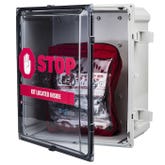
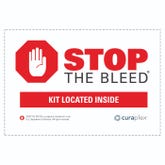
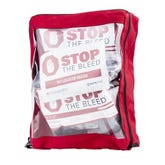
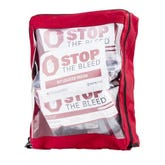
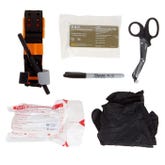

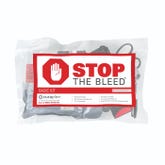
 CALL US:
CALL US: